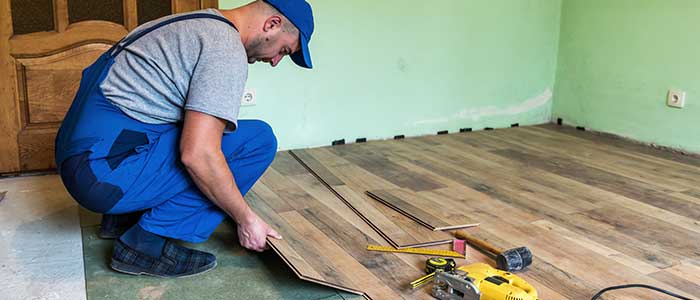There is no right or wrong way when it comes to the direction of installation of your hardwood flooring. However, in some cases, the direction in which the wooden floorboards are installed can play a very important role both in the appearance of the floor as well as its stability and long-lasting power. The atmosphere you want to create in the room where the floor will be installed will play an essential role in what direction to choose for the installation of the floorboards. The direction of installation may seem like something insignificant, however, once the floor is installed, you will find out that the direction of installation can make a big difference. In this article, we will find out more about the topic and help you make the right decision for your project.
What Factors Affect the Choice of Installation Direction
In a nutshell, the three main options of installation direction are along, across, and diagonal. What sort of installation direction you are going to choose depends on factors such as the size of the room, the main source of natural light in the room, the layout of the room, the structural conditions, etc.
Room Size
The size of the room can be visually influenced by the installation direction of the floor as in some cases the direction of installation may make the room appear visually larger and more spacious, while in other cases it could make the room look narrower or smaller. For example, having the floorboards installed on the long side will emphasize the shape of the room. In case the hardwood floorboards are laid in the direction of the longer side of the room, you will achieve a room appearing visually longer. Laying the floorboards across the floor will help you make the room appear visually wider.
In addition to the importance of the installation direction, the size of the wooden floorboards is also important along with the colour and type of the floorboards that can make every room appear wider, longer, narrower, etc. In general, the larger and wider the floorboards are, the smaller the room will visually appear. In order to visually make the room appear more spacious and larger, make sure to choose smaller floorboards. However, if you don’t want to affect the dimensions and size of the room visually or emphasize its shape and layout, you can always opt for cube patterns and cassette shelves that appear neutral in every room and do not affect it visually, no matter the direction of installation and no matter if the floorboards are installed at a certain angle.
Light
The sources of natural and artificial light in a room are also very important aspects to consider when deciding on the installation direction of hardwood flooring. The way light will “play” with the wooden floorboards could either enhance the assets of the layout and size of the room or not. In case the floorboards are laid parallel to the direction of light entering the room from the main source of natural light, the light will be optically directed to the centre of the room and refract less.
In case the floorboards are installed transversely to the main light source, the floorboards will appear wider while the graining of the floorboards will be enhanced but also all small imperfections on the surface of the floor. Cross-laying is a chosen installation direction if you want to enhance the unique appearance of the wooden floorboards. However, if you want to create a more seamless effect and discreet appearance of the floorboards, make sure to opt for a longitudinal installation direction.

Be the first to comment on this post.